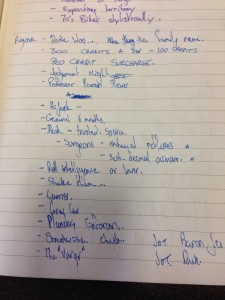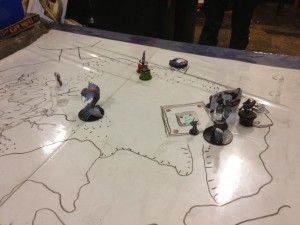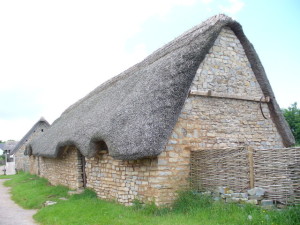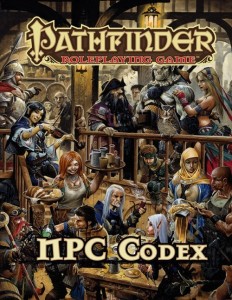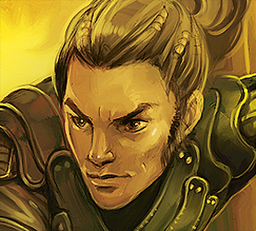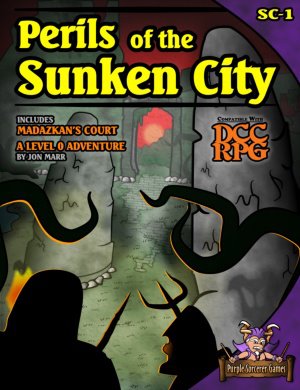The post below is written by UbiquitousRat, a guest blogger for The Iron Tavern.
 Heroic Mykenaea was conceived just ever so slightly before we decided to sign up to the new Rolemaster public playtest. Our group had been going through a bad patch, having abandoned Dungeons & Dragons 4e and drifted through a short campaign using GURPS. What was missing was a sense of commitment to a setting, something that would allow me as a GM to commit to writing and the players to commit to turning up regularly. With this need in mind, it was a series of short steps that led us to Rolemaster.
Heroic Mykenaea was conceived just ever so slightly before we decided to sign up to the new Rolemaster public playtest. Our group had been going through a bad patch, having abandoned Dungeons & Dragons 4e and drifted through a short campaign using GURPS. What was missing was a sense of commitment to a setting, something that would allow me as a GM to commit to writing and the players to commit to turning up regularly. With this need in mind, it was a series of short steps that led us to Rolemaster.
What is Heroic Mykenaea?
Heroic Mykenaea is a swords & sorcery genre fantasy campaign loosely based on the myths and stories of Mycenaean Greece (Achaea). It is a world mixing Greek myth, magick, Olympians, Chthonic Cults, heroic action, and swords & sorcery fantasy themes.
Mykenaea was born from the suggestion of a player that we use real-world maps upon which to base our own setting. At the time we were talking about a post-Apocalyptic world and the idea was quite novel. Unable to agree on a game system, however, we began to discuss other setting ideas.
Just as I was considering using the excellent new Hackmaster rules, and actually began to plan some NPCs using those rules, the news broke about a new edition of Rolemaster. After a consultation with the group it was agreed to sign up for the playtest. The first campaign maps were drawn from a Google Maps image pulled from the web, and you can view some of the cartography that developed from the idea on the wiki.
Adapting to Rolemaster
How do you adapt a setting to fit a game before you’ve seen the rules? Truth is, you can’t.
Mykenaea was designed making decisions based loosely upon the earlier editions of Rolemaster. We knew that the core of the game, whilst being re-designed, was also seeking to remain faithful to the 35-year or so history of the system.
We decided that, while the setting would be Greek-inspired, we would not allow history to limit our vision. Consulting a summary of pre-Classical history it was apparent that what is known about the “Heroic Age”, prior to the 5th Century BCE, is relatively limited to the stories of Homer and some sketchy archaeology. This was fertile ground for an alternate universe in which magick was mixed with the heroic mythology of Homer and others.
As GM, I made a series of decisions and then began to draft the background (available on the wiki) that I felt would get the players started. These decisions were:
- To set the adventure in the period just prior to the classic Heroic Age heroes, with the first major campaign event to be the destruction of Thera.
- To allow as wide a selection of magick as possible in the setting… but making it secretive and hidden.
- To use as many of the Rolemaster character Professions as possible.
- To emphasise an old-school and sandbox style over our usual story-driven approach.
- To commit to using as few House Rules as possible.
How have we adapted so far?
We meet once a fortnight on a Friday night. We’ve had two sessions since the release of Character Law a month ago. Session One, which formed the basis for “An Evening with Rolemaster”, was all about character generation. Session Two began our campaign.
Rolemaster is a generic fantasy RPG system so it fits to any setting quite readily and is designed to be flexible. Each decision made as GM has been recorded on our Rolemaster Player’s Guide for Mykenaea. It has been really simple to adapt.
We’ve left out only one Profession from the core rules: the Monk. This is because the Eastern-inspired martial arts stereotype is too much even for my warped vision of ancient Greece to handle. That being said, it has been fun to adapt some other staples to the setting.
A good example of this adaptation has been the inclusion of the Paladin, chosen by one of the players. Here the heroic idea for the character has influenced the setting: our Paladin, being the outcast eldest son of a king, is a true Scion of Zeus; he is blessed and favoured by the King of the Olympian Gods and destined for… something cool. The Paladin is simply referred to as the Scion, conjuring images relevant to the period instead of the classic mediaeval vision.
Magick in Greece?
Erm, yes. Like I said earlier, this is a fantastical vision of Greece.
It’s loads more fun to include magick (the spelling is deliberate) than to leave it out. Partly we wanted to playtest all the Rolemaster rules… but mostly, we love magickal heroes. Looking at the party created, we only have one non-spellcasting Profession: the lone Fighter. The others are the Ranger, Scion (Paladin), Dabbler and Mentalist.
As GM, I decided to limit all the Closed Spell Lists (see the Spell Law article for details on what that means) and allow only Base and Open Lists to be chosen. This allows me to introduce Closed Lists (which tend to be the most powerful spells) later in the campaign, and on a need-to-access basis. The players like this limitation… and have to justify their inclusion of powerful spells. One player has already got me to allow a lone Closed List as part of his hero’s background.
Races and Cultures
It’s worth mentioning the Races and the Cultures too.
I’ve dropped Halflings from the setting but included something called Pel-Dimini, which are a kind of Half-Elf. Rolemaster provides Elves and Dwarves, so I absorbed those rules to fit the Dimini and the Sesklo races respectively. The system provides me with the tools to create the Pel-Dimini so I’ll be adding them to the setting at the moment I first need them.
As for Cultures, these allowed me to have different Human groups. The native rural and urban Pelasgian Men are different from the cosmopolitan Achaean Men; the Minoans are seafarers and cosmopolitan too. Even the non-Human races can fit into their homelands using the appropriate Cultures… and I’ll be making a Greek-style Slave culture as soon as I need it too, using the rules in Rolemaster to facilitate it.
Verdict?
So far, so good. It’s been really easy to adapt the new Rolemaster to my setting. In fact, the new system has inspired some decisions too… like how magick works.
During the most recent session we decided to use some of the simplified gaming options, such as the Simple Rounds optional rule (which makes combat run quicker). What is great is that Rolemaster provides such options as part of the system. This has meant that, so far, we’ve only generated one House Rule… and even that might be something that the playtest renders obsolete if the suggestion reaches the designers.
All in all, it’s been the easiest setting build I’ve ever worked on. The players seem to be getting into it too… and I’m itching to run the next session.
Ghouls, anyone?
Bio
 UbiquitousRat is a long-time roleplayer and gamesmaster who has a history with gaming going back to 1979. In 1994 he joined Games Workshop, spending 12 years in the gaming industry at the coal-face of tabletop wargaming. In 1998 he founded the Friday Night Roleplay group at his home in suburban Nottinghamshire, UK, and ever since has been the primary GM. The group was involved in the playtest of Warhammer Fantasy Roleplay 2nd Edition and Warhammer 40,000 Roleplay, as well as giving air to the development of 6d6 RPG. The core five players are all looking forward to the new Rolemaster and everyone is excited to be sharing the story in The Iron Tavern. Oh, and he’s also a high school teacher during the daytime.
UbiquitousRat is a long-time roleplayer and gamesmaster who has a history with gaming going back to 1979. In 1994 he joined Games Workshop, spending 12 years in the gaming industry at the coal-face of tabletop wargaming. In 1998 he founded the Friday Night Roleplay group at his home in suburban Nottinghamshire, UK, and ever since has been the primary GM. The group was involved in the playtest of Warhammer Fantasy Roleplay 2nd Edition and Warhammer 40,000 Roleplay, as well as giving air to the development of 6d6 RPG. The core five players are all looking forward to the new Rolemaster and everyone is excited to be sharing the story in The Iron Tavern. Oh, and he’s also a high school teacher during the daytime.
 Something a bit different this time around, an adventure that is rather barebones, and not really an adventure.
Something a bit different this time around, an adventure that is rather barebones, and not really an adventure.

